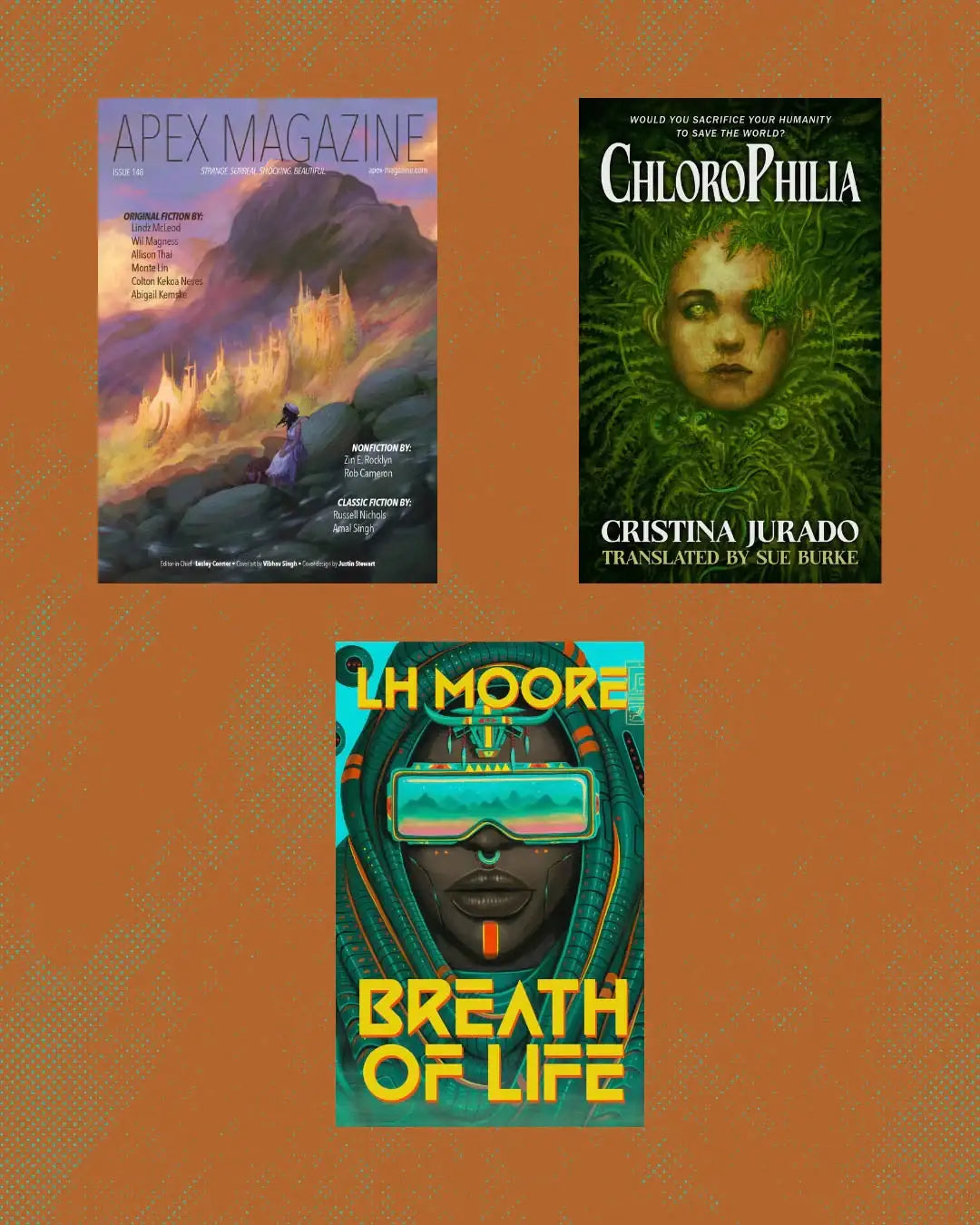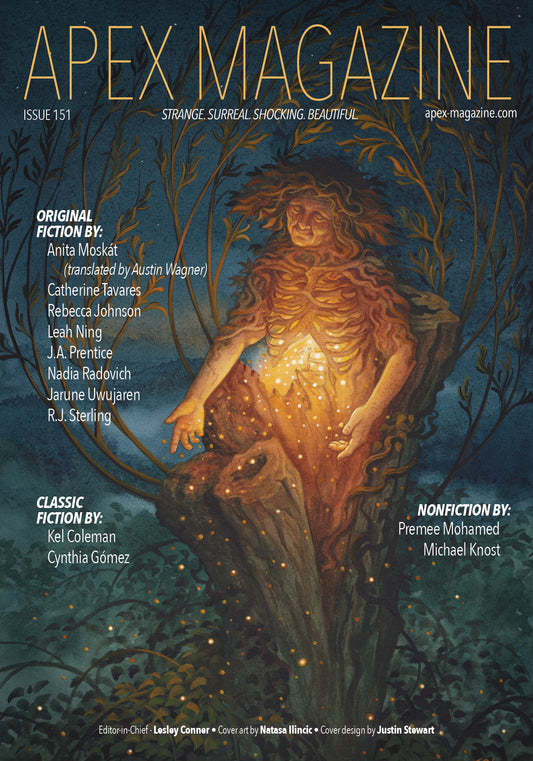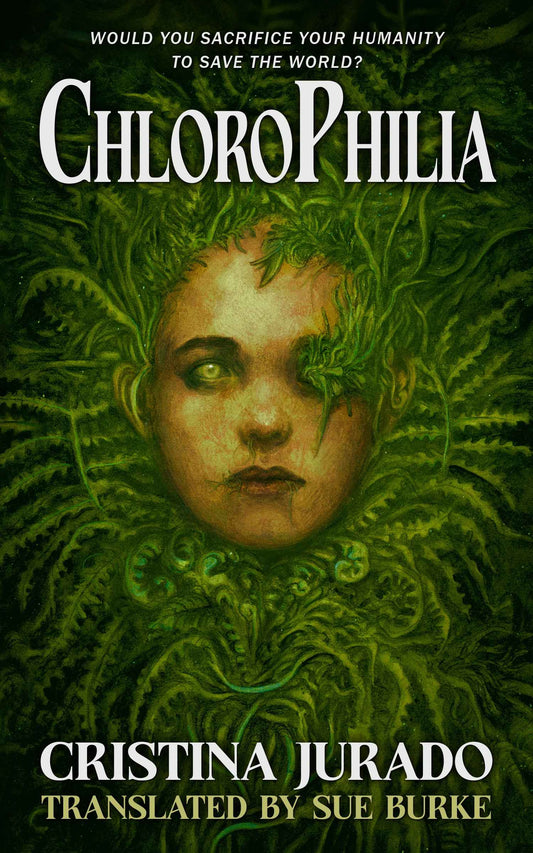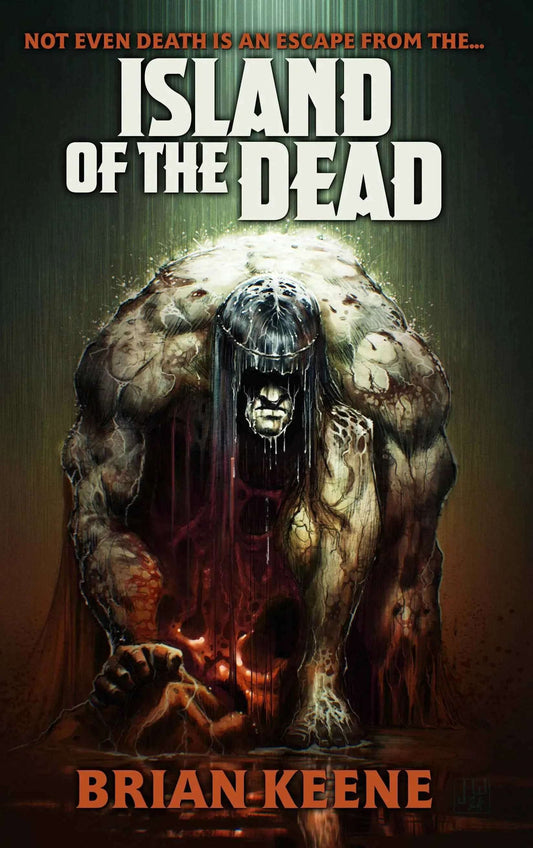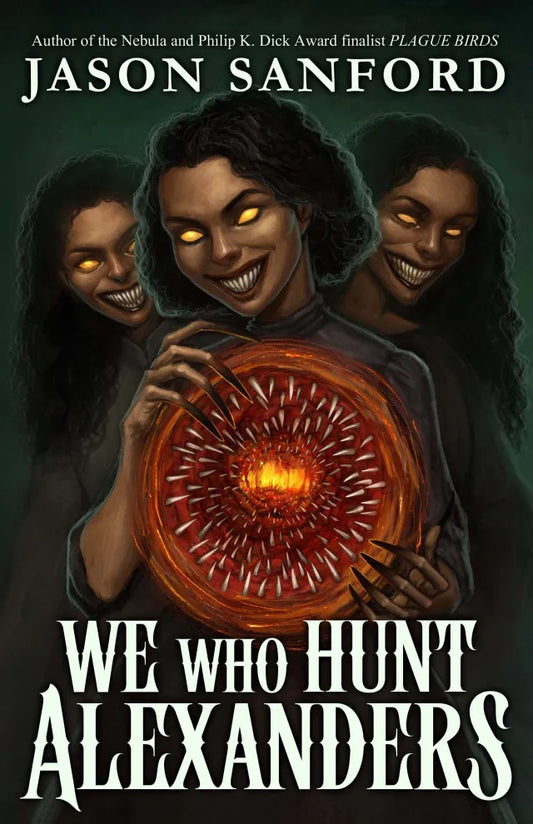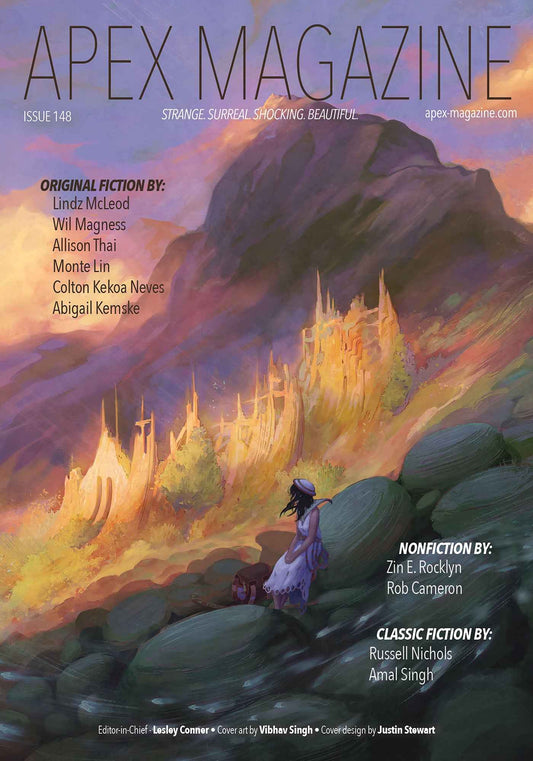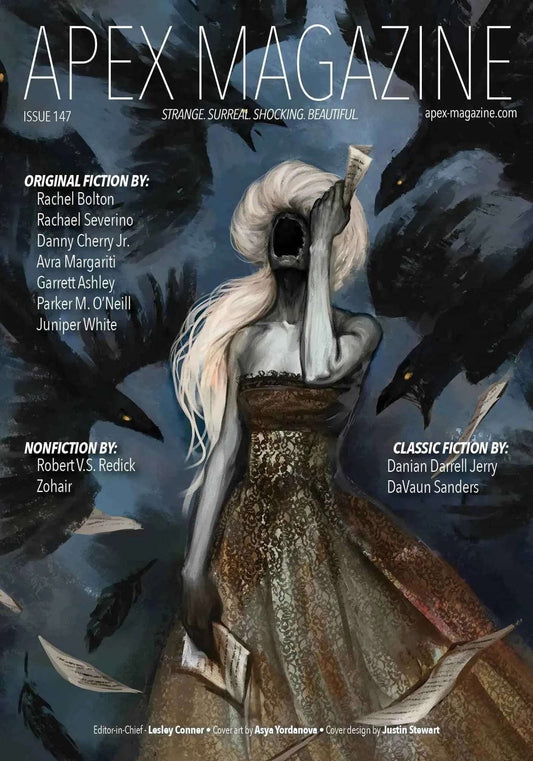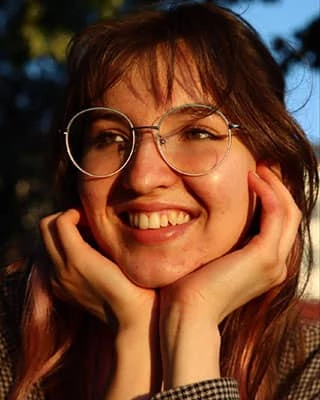
This month’s cover of Apex Magazine was created by illustrator and designer, Robson Michel! Robson resides in Brazil and specializes in fantasy and character design. He’s been fascinated with stories since childhood and studied design in college. During college he worked as a graphic designer, but had a passion for concept art and illustration in the entertainment industry. After years of practicing, studying, and waiting, his time to try a freelance career finally came! He always tries to evoke the feeling of something fantastic in his work, whether that’s through fantasy characters or epic scenes. He has developed illustrations and concept art for many clients including Wizards of the Coast, Bethesda, Dragon Shield, Talsorian Games, Games Workshop, and more.

Bradley Powers: Your work shows an amazing understanding of scale, perspective, and creating compelling compositions, as we see in this month’s cover, “Horus.” What kind of training, professional or otherwise, do you have in art?
Robson Michel: I started drawing frequently at a young age, sometimes copying my favorite characters from comics and TV shows, but that was always a hobby. Only when I was studying design in college, did I learn about digital painting, and I started going after concept art and illustration forums. Online courses and tutorials taught me how to paint, while books about fundamentals—like James Gurney's Color and Light, Scott Robertson's How to Render, and Marcos Mateus-Mestre's Framed Ink—helped me build a solid base for my knowledge.
BP: Digital media seems to be your medium of choice. What other media have you worked with and what makes you love working digitally?
RM: I started, as most have, in traditional pencil and I keep the habit of sketching traditionally to this day. During college I experimented with traditional paint, but never went far with it. I work digitally mainly because I worked as a graphic designer for some time, and the programs are intuitive for me. It's practical, I can explore different compositions, and I can tweak them easily if the need arises.
BP: Where does your love of fantasy come from?
RM: From a young age I was interested in visual arts and storytelling, from comics to videogames. The fantastical, otherworldly, surreal, or sometimes just “cool” things fascinated me, but when I started playing Dungeons and Dragons when I was twelve, I felt the possibilities of a game that I could create myself. Fantasy was a type of art that I saw as limitless, where I could explore and develop my art as well as use it to play with friends, drawing their characters and the monsters they encountered. It was the perfect mix of a game and art that I loved.
BP: Recently you’ve done a lot of Dungeons and Dragons character designing. What parts of this do you love and what parts do you struggle with?
RM: Well, I was a D&D player way before becoming a professional artist, so creating fantasy characters was already something that I loved to do. To think about how to convey someone's personality through pose, gesture, outfit, and equipment is pure fun for me. The hardest part is knowing how to make a character interesting and unique, but still grounded in realism. For example, when does a sword become too big or too complex? The answer is usually, when I feel that it's right.
BP: What techniques do you use to accentuate the personalities of the characters that you illustrate? How do you bring the characters to life?
RM: One of the techniques I like is exaggerating some aspects slightly beyond what it would look like in real life, almost like a caricature. Making the smile of the tricky rogue a little wider, or making the shoulder of the armor of an intimidating paladin bigger. This helps to emphasize what is important in these characters.
BP: The world of D&D is vast and amazing. As a character artist, how do you make sure you understand your client’s character and represent them exactly the way they want?
RB: Fortunately, the briefs are usually well detailed in that aspect, giving me all the important features needed. Sometimes it's an existing character, with concept art and even other illustrations depicting its adventures, but in other situations, I have to create these things from scratch. In the case of the latter, knowing the specific setting and mood is essential. A wizard from Baróvia might be heavily related to gothic horror, while a wizard that appears in the Wild Space from Spelljammer might take clues from space operas. That being said, it's safe to create a range of designs in the first steps of the process that cover different directions. Exploring versions with different body types or poses can help me and the art director to find the best depiction of our character.
BP: Thank you so much, Robson, for taking us through your artistic journey! If you’d like to explore more of Robson’s fantastical creatures and characters you can find them at https://robmichel.artstation.com/.
